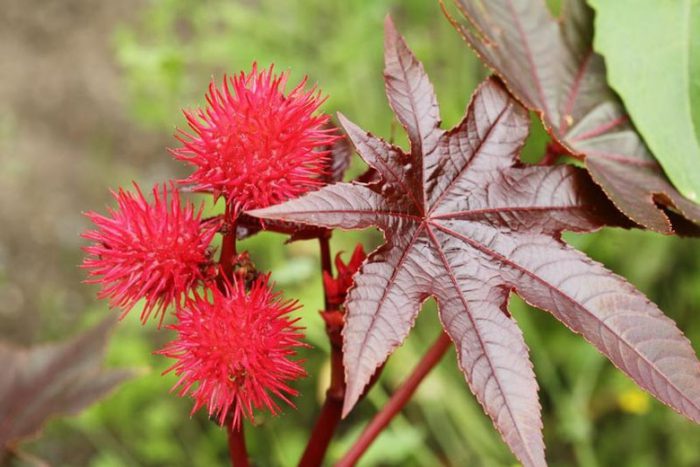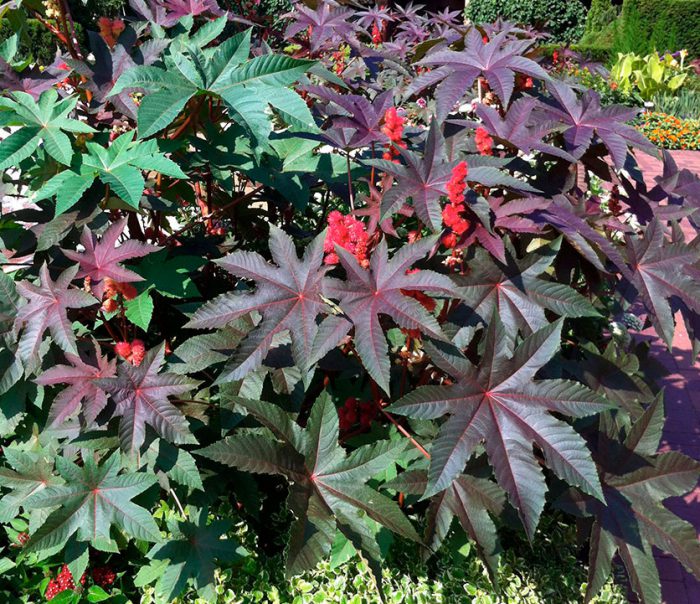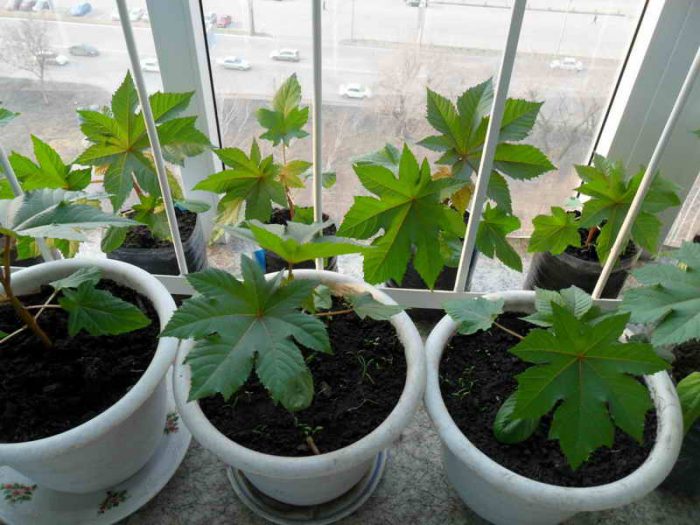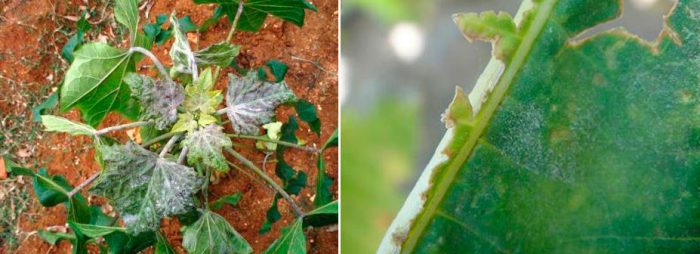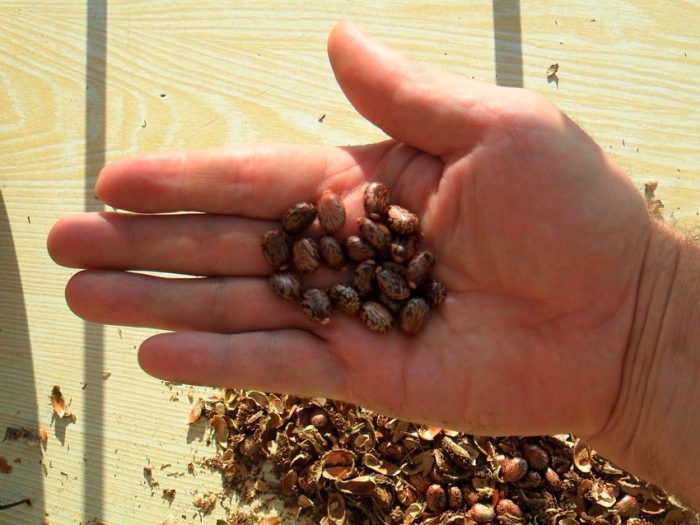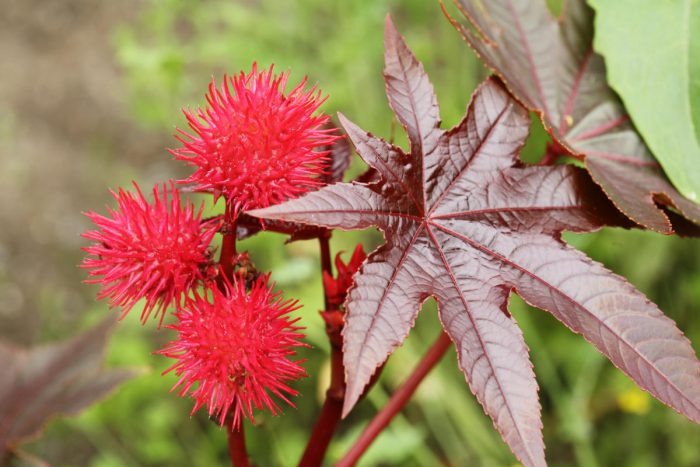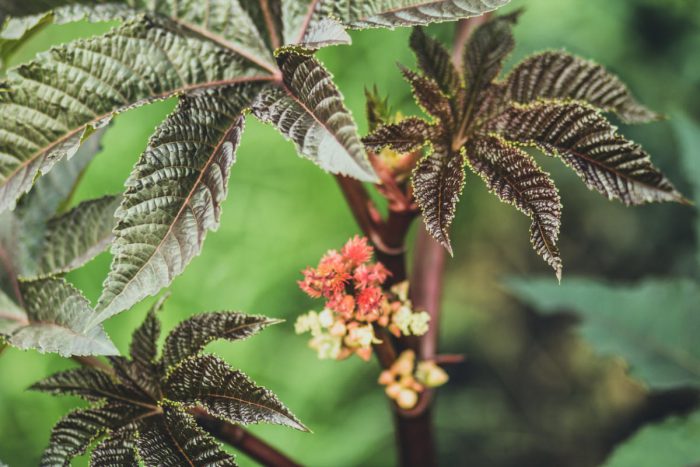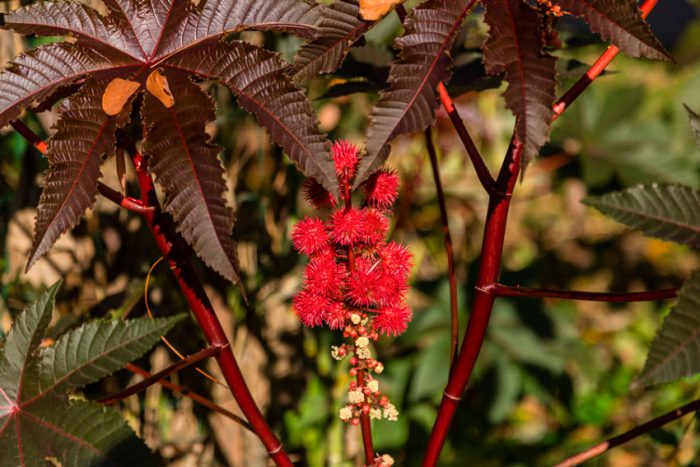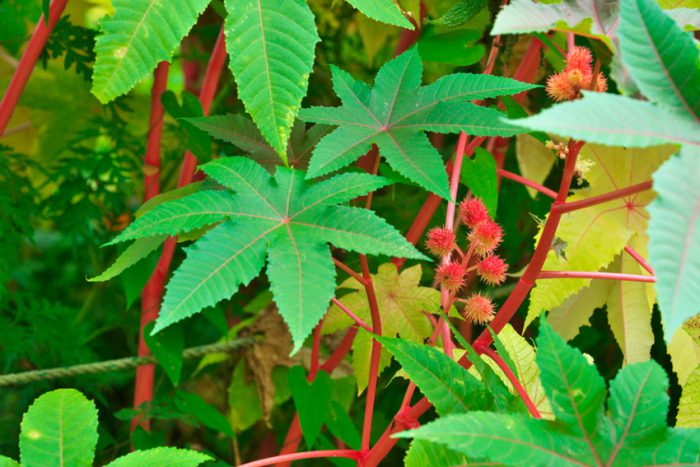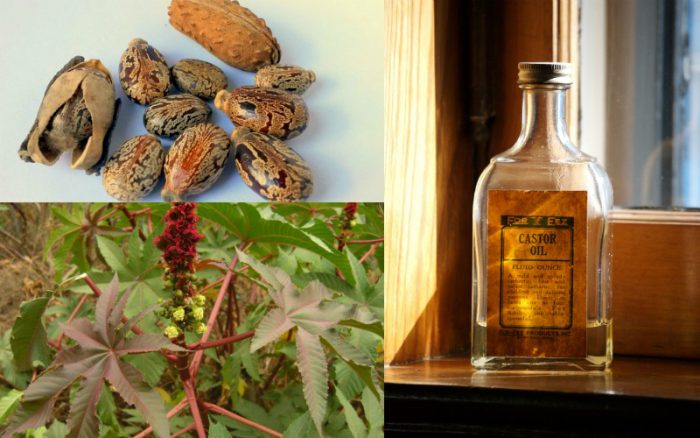Castor bean (Ricinus communis) is a medicinal perennial garden and oil plant, belongs to the euphorbia family, and belongs to a monotypic genus (the genus consists of one species). Many varieties and garden forms of castor bean are quite popular among gardeners. The birthplace of such a plant is probably Africa, or more precisely, Ethiopia. However, today, in the wild, it can be found in tropical and subtropical areas around the world, for example: in Iran, Africa, Argentina, China, India and Brazil. In North Africa in Egypt, they have been cultivating castor bean for many hundreds of years, the fact is that the seeds of such a plant were found in the tombs of the kings of Egypt, built in the 4th – 3rd century BC. "Ricinus" from Latin can be translated as "tick", which gives the name to the plant "castor oil plant". The fact is that outwardly, its seeds are very similar to ticks. Russian gardeners also call this plant castor oil, Turkish hemp and paradise tree.
Content
Features of castor bean
Castor oil plant is an ornamental deciduous annual. This sprawling plant can reach a height of 2-10 meters. Erect naked branched shoots can be colored red, brown or greenish-blue. The alternately located leaf plates with hollow long petioles look very impressive. Large palmate-separated leaf plates include from 5 to 7 blades, while they are colored green. Thanks to its large, spectacular foliage, the plant has become so popular among gardeners. But dim flowers, collected in inflorescences in the form of a brush, have no decorative value. The fruits are capsules, on the surface of which thorns are located, they have an oval-spherical shape, and make the bush even more beautiful, being placed between the leaves. These fruits contain oval seeds with a variegated mosaic color: brown, pink, light pink against the background of the main color shade, which depends on the variety and can be brown-red, gray or otherwise. This plant is poisonous because it contains the pyridine alkaloid ricin.Often, low-growing varieties of castor bean are cultivated with foliage having a bright color, for example, Zanzibar castor bean, Gibson variety or Cambodian castor bean.
Growing castor bean from seeds
Sowing
Castor bean can only be propagated by seeds, and before sowing they need scarification. According to statistics, out of 10 sown seeds, only 6 or 7 turn out to be viable. To increase the percentage of germination, and scarification is performed, for this you just need to rub the seeds on sandpaper, and then immerse them in a growth stimulator solution (Heteroauxin, Epin, etc.) for 12 hours. ). Sowing seeds can be done directly in open ground in the last days of April or in May. However, it is preferable to grow castor bean through seedlings, while the seeds are sown in March or the first days of April. For planting, it is recommended to use 1 liter plastic buckets, which should be filled ½ part with garden soil. Seeds are sown one by one, deepening only 20-30 mm. In the event that the seeds have been scarified, then the first seedlings will appear after three or four days. If the sticky peel, located on the surface of the cotyledonous leaves, does not separate itself, you need to help it using tweezers. Otherwise, rot may develop on the seed.
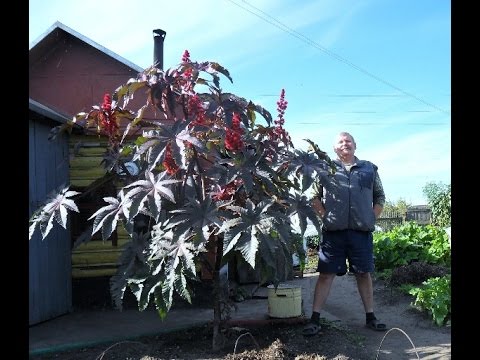

Watch this video on YouTube
Seedling
The emerging seedling is growing very actively. At first, the shoot is stretched, then the first leaf plate is formed, and it is at this time that the seedlings need to be rearranged in a cool, well-lit place, while it should be borne in mind that the temperature there should not drop less than 15 degrees. As the flower grows, you need to gradually add soil to the container and this must be done until it becomes full. In the event that the growth of the plant is very fast, then it will have to be transferred to a larger pot. By the time it is time to transplant seedlings into open ground, they can be about 100 centimeters high.
Planting castor oil plants in open ground
What time to plant
Castor oil plant differs in that it is completely uncaptious and undemanding to growing conditions. If you want it to grow very quickly and have an incredibly spectacular appearance, then for planting you should choose a warm, well-lit place with loose, moist soil saturated with nutrients. Plants feel best on black soil. It will be possible to plant seedlings in open soil only after the return frosts have passed, and this time, as a rule, falls on the last days of May or the first days of June.
How to plant
Before proceeding with planting, the seedlings must be watered abundantly. Then the bushes, together with a lump of earth, are carefully rolled into prepared holes, which are covered with simple garden soil and compacted well. After that, the castor oil must be well watered.
Sowing castor bean directly into the ground is carried out in the first days of May, while it is necessary to make not very deep holes and put 2 or 3 seeds in them.
Attention! The seeds of this plant are distinguished by a high content of toxic substances. So, the lethal dose for a child is 6 seeds, and for an adult - 20 seeds. When working with castor oil, experts advise wearing gloves.
Castor oil care
Castor bean planted in open ground grows very quickly, and at the same time, no special efforts are required from the gardener. The main thing is to remember that such a flower needs systematic watering. So, every 5 days, a bucket of water should be poured under the bush. Weeding is needed only for young plants, and when they grow up, the weeds will not interfere with them. Before the inflorescences begin to form, it is recommended to feed the plant with nitrogen-containing fertilizer.
Diseases and pests
Such a plant is highly resistant to harmful insects and diseases. If you have planted seeds directly in open soil, then young plants can be damaged by false wires, wireworms, caterpillars of the meadow moth, winter moth, and sandy slugs can settle on them. During flowering, young fruits can damage meadow bugs. Getting rid of the caterpillars is easy. In the event that there are few caterpillars, then they can be removed by hand, if there are enough of them, then an infusion of wormwood will come to the rescue. In order to make it, you need to fill a bucket 1/3 of the chopped wormwood, and then pour in so much water that it becomes full. The infusion will be ready in three days, it needs to be filtered and you can start processing the bushes. In the event that spicy herbs (for example: dill, coriander, garlic, parsley, mint or onion) are sown next to these flowers, the caterpillars will bypass them. It is very difficult to get rid of the wireworm and false wireworm, so it is better to resort to preventive measures before the plant is infected. To do this, during planting, each well must be shed with a not very strong solution of manganese potassium.
Castor oil plants can get sick with pink, gray or black rot, cercosporosis, late blight, bacteriosis, phyllosticosis, powdery mildew and other fungal diseases. It is recommended to treat infected bushes with Bordeaux liquid or another similar agent.
After flowering
Seed collection
In the event that you decide to collect seeds from plants you have grown, then in the summer, mark those bushes that look the most impressive, are absolutely healthy and powerful. In the first days of September, the fruits should be cut and folded to dry in a well-ventilated room. The seed pods will dry out only in November or December. If the fruits dry very well, then with slight pressure they should completely crumble, and at the same time 2 or 3 seeds will fall out of them, which are outwardly similar to beans. Remember that you must wear gloves when working with castor bean fruit and its seeds. These seeds must be stored in a place where children or animals cannot reach them. They remain viable for at least four years.
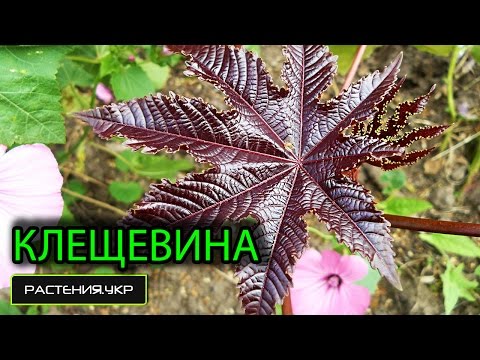

Watch this video on YouTube
Types and varieties of castor oil plants with photos and names
It has already been said above that there is only one type of castor oil plant. However, thanks to the work of breeders, many varieties of such a flower have appeared.
Castor oil plant Zanzibar
This fast-growing annual plant can reach a height of 200 centimeters. It has spectacular racemose inflorescences and large leaf plates. In single plantings, it resembles a rare tropical plant, therefore it is planted, as a rule, as a tapeworm. The leaf plates are painted violet-red.
Castor oil plant Indian, or Cambodian
The bush reaches a height of 1.2 m. The trunk is almost black, and the leaf plates are very dark in color. When planting such a variety next to other varieties of castor bean, the bush looks extremely impressive.
Gibson variety
The bush can reach a height of 1.5 m, while its leaf plates have a metallic sheen. This variety has undersized forms and varieties with rich red leaf plates.
Borbon castor oil tree
The height of the bush can be up to three meters. The dense trunk is red in color. Large green leaf plates are glossy.
Russian breeders managed to develop an ornamental variety that has become very popular, and it is called Kazachka. The bush reaches 200 centimeters in height, it has a glossy brownish-red trunk, as well as dark green adult leaf plates with reddish veins.Young leaves are purple-red and have white dots along the edges of the teeth. Bloody red flowers have stigmas of a darker shade. The fruits can be purple, red or carmine.
The benefits and harms of castor bean
Despite the fact that castor bean is poisonous and contains a large amount of ricin poison, it is very useful for humans, because valuable essential oil is extracted from it. Castor oil plants are even grown on an industrial scale to obtain this oil. The composition of such oil contains unsaturated glyceride, oleic, stearic, linoleic acids and glycerin, as well as micro and macro elements magnesium, iron, calcium and potassium. Castor oil (castor oil), made on the basis of oil extracted from castor bean seeds, is used as a laxative in the treatment of enteritis, constipation, colitis and other intestinal diseases associated with inflammation. It is also used externally for bruises, wounds, burns, ulcers, warts and colds. This oil is used in the treatment of varicose veins and hemorrhoids. It is also used as drops for eye inflammation and in the treatment of gynecological diseases. You can buy this oil in capsules or in small dark glass bottles. When stored in a refrigerator, it can retain its beneficial properties for up to several years, while the oil must be in a bottle made of dark glass with a tightly ground cork.
This plant is also used in the treatment of endometriosis. To do this, you need to take 10 grams of fresh leaves, cut them finely and combine with 200 ml of freshly boiled water. It is necessary to boil the resulting mixture from 15 to 20 minutes. over low heat. Then the mixture will need to be infused for several hours, after which it should be filtered. Drink infusion of 1 large spoon three times in knocks for 14 days.
Lukewarm castor oil is used to treat bronchitis or colds. It should be rubbed into the patient's chest several times with knocks, after which the person is well wrapped. It is necessary to rub castor oil into problem areas every day for warts, burns, wounds, hemorrhoids or varicose veins. In case of eye inflammations, 1 or 2 drops of castor oil should be dripped into the eyes before bedtime for 3-5 days.
Castor oil is also widely used in cosmetology. It is used to treat the scalp and hair, to remove age spots, to get rid of wrinkles and other irregularities in the epidermis. And with the help of such oil they fight calluses and corns.
Several popular recipes
- Strengthening eyelashes. Dip the brush in castor oil and spread it over the lashes, while being careful not to get the product in your eyes. After 30 minutes. Remove any oil that has not been absorbed from your eyelashes with a tissue. To get a visible result, you need to carry out such procedures every day for a month.
- Problem skin. Parse the skin surface of the face and spread lukewarm castor oil on it. After 60–90 minutes. wipe your face with a paper towel and rinse with cool water.
- Hair loss... In a small container, combine freshly squeezed lemon juice, castor oil and alcohol, taken in a 1: 1: 1 ratio. This composition should be rubbed into the scalp before going to bed. In the morning, wash it off with plenty of lukewarm water.
- Dandruff. Combine castor and calendula tincture in a 1: 1 ratio. Then the mixture must be rubbed into the scalp. After 30 minutes. you need to wash your hair.
Products made from castor bean have contraindications. They cannot be used by pregnant and breastfeeding women, with exacerbation of chronic diseases (even chronic constipation), with intestinal and uterine bleeding, with individual intolerance, and with intestinal obstruction of a mechanical nature. Experts advise against using such products for the treatment of children under 12 years of age.

